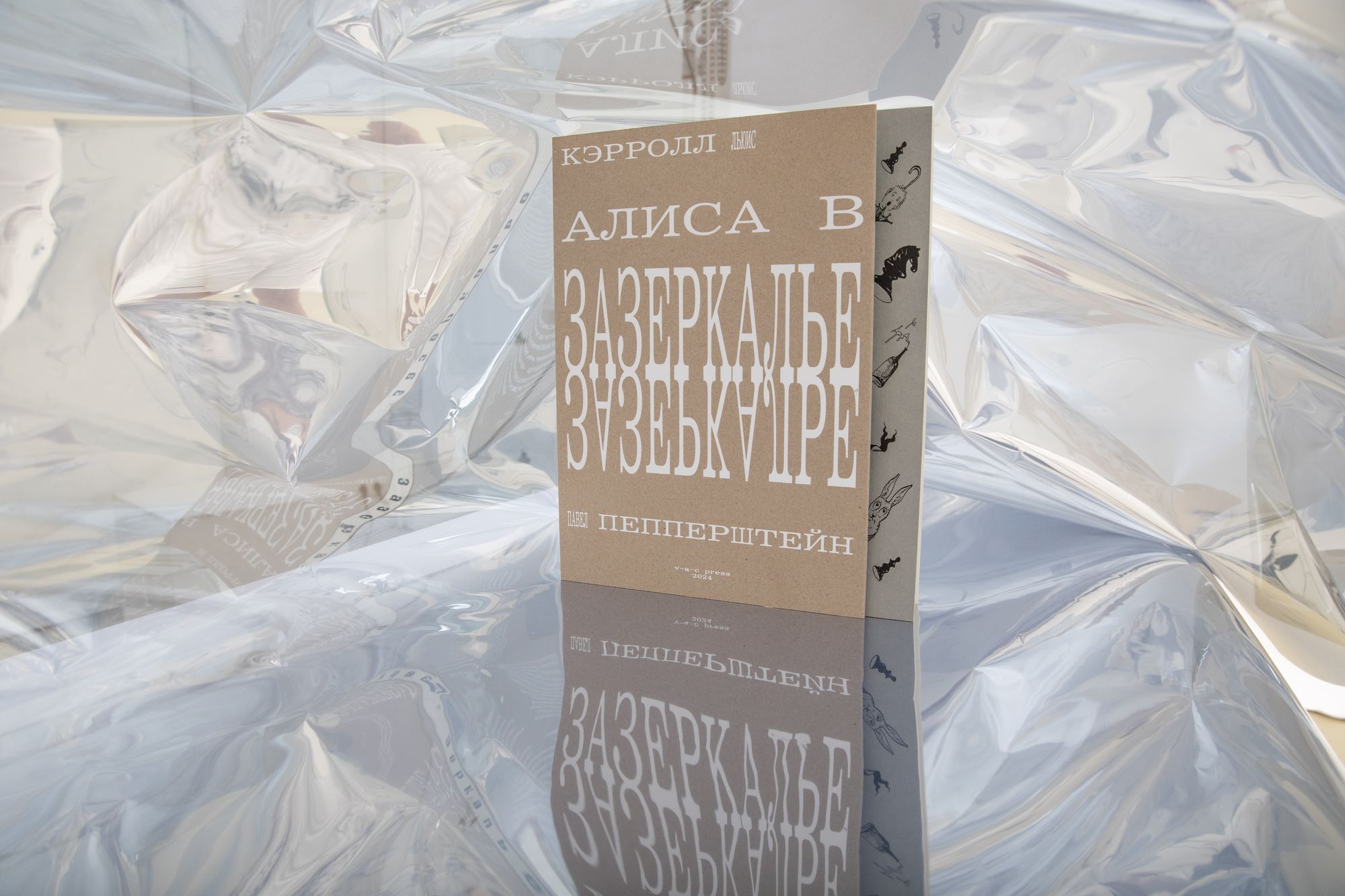Lewis Carroll.
Alice in the Mirror, or Through the Looking-Glass, and What Alice Found There
A continuation of Alice’s story, illustrated by the artist Pavel Pepperstein.
How does one remember the future? Begin a journey across a chessboard? Get into someone else’s dream? And how can we live in the opposite direction? The answers to these questions lie in the second part of Lewis Carroll’s fantastic tale, illustrated by the artist Pavel Pepperstein.

Pavel Pepperstein (b. 1966) is an artist, writer, musical performer, art theorist, and one of the founders of the Inspection Medical Hermeneutics group. His personal exhibitions have been held at the State Russian Museum, the Neuer Aachener Kunstverein, Kunstmuseum Basel, the Moscow Multimedia Art Museum, and the GARAGE Museum of Contemporary Art. Pepperstein is the author of The Mythogenic Love of Castes (1999), Spring (2020), Prague Night (2011), The Era of Attractions (2018), Wanderings Through Camps and Monasteries (2019), Exhibitionist: German Novel (2020), and Trying to Wake Up (2022).
Lewis Carroll (1832–1898) was an English mathematician and logician, a philosopher, deacon, and photographer. As well as his remarkable fairy tales The Adventures of Alice in Wonderland (1865) and Through the Looking Glass (1871), Carroll wrote other, no less well-known works—the humorous poem The Hunting of the Snark (1876) and Sylvia and Bruno (1899), a novel in two parts that he considered one of his most important compositions.
…and a most curious country it was. There were a number of tiny little brooks running straight across it from side to side, and the ground between was divided up into squares by a number of little green hedges, that reached from brook to brook.
“I declare it’s marked out just like a large chessboard!” Alice said at last. “There ought to be some men moving about somewhere—and so there are!” She added in a tone of delight, and her heart began to beat quick with excitement as she went on.
“It’s a great huge game of chess that’s being played—all over the world—if this is the world at all, you know. Oh, what fun it is! How I wish I was one of them! I wouldn’t mind being a Pawn, if only I might join—though of course I should like to be a Queen, best.”
The story that would become the first book about Alice came to Carrol by chance as he rowed along a river in Oxford, his continuation of this daring and dreamy little girl’s story was composed intentionally and published six years later. In Through the Looking Glass, Alice finds herself in a remarkable country, where everything is mirrored and subject to the rules of chess. Moving across the horizontal and vertical squares of the board, Alice tries on the role of different chess figures and experiences a magical transformation from pawn to Queen.
Lewis Carroll’s tale is one of the most important books for Pavel Pepperstein. He has reread it countless times, and practically knows it by heart. This fairy tale and this artist are ideally paired.
Alice in the Looking Glass is the sixth book in
Artist
Pavel Pepperstein
Translators
Nina Demurova
Samuil Marshak
Design and layout
Marya Subbotina
Сurator of children’s publishing programme
Daria Atlas